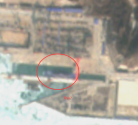I have an objection.This is a gargantuan oversimplification. Not all procurement matters are a simple function of how much a system costs.
An SSN provides a myriad of completely unmatched capabilities and intrinsic benefits that a TEL-based system can never provide for any dollar amount. These are a large part of what makes SSNs more cost effective than one might initially think, and worth every last cent that they do ultimately cost. The amount of impact a single SSN can have on the course of a conflict - especially in a Pacific naval war - is orders of magnitude greater than what an equivalent salvo of TEL-based munitions could achieve.
Wars are eye-wateringly expensive to be in for any length of time, so spending $10 Billion on platforms that end the conflict in 10 days is colossally preferable to spending even a tenth of that amount on a roughly related platform without the key capabilities the other provided, and then getting dragged into an extended, economy-melting, attritional air/naval war.
If the two CONEMPs scaled capability uplift with investment in remotely the same way, it might be less misguided, but that's not the case at all. To outfit a DF-17 Brigade, large amounts of trained personnel, buildings, support infrastructure, vehicles, POL, electricity, land, and much much more is required. This is a sizable military formation with very large overhead and operational costs involved. It requires trained servicemen to fill its ranks. It requires all of the networking and connectivity overhead that standing up a new unit demand. It requires officers and senior enlisted leaders, it eats a chunk of the PLA's total sustainment capacity, and so on and so forth.
What you get for the price, logistics footprint, and opportunity cost of procuring an SSN - which has the ability to prosecute war-winning targets in a way only possible due to the lack of precursor warning signs, the prompt engagement tempo, the unanticipated salvo geometry, and... yknow... the rest of a Nuclear Attack Submarine's capability set - is (once the real world is factored in) far more desirable than an equal investment into DF-17 procurement.
I'm quite worn out currently, so I do apologize if I come across as demeaning, but I think you may have a shallower grasp than you're aware of on the complexities and nuance of effects based military procurement and force structure growth.
Orders of magnitude difference can only be possible if China uses those missile equipped SSNs for Pearl Harbor V2.0. Otherwise the said DF-17 brigades would be on patrol and ready, and so is the US IAMD. Yes, a normal training deployment becoming hundreds of missiles on key US bases without any warnings is something only SSNs can achieve. Hundreds of TELs getting loaded and leaving their bases would attract attention. Also, maintenance and basing wise, it is quite obvious an SSN would be much harder to look after compared to a few dozen trucks.
This is not to say a DF-17 brigade is an alternative to the SSN, it isn't. Especially for China which doesn't have bases around the world which it can utilize air power from... China will need those subs to threaten distant ships and bases. But a submarine isn't a winner when it comes to land attack if the adversary isn't poor in air defenses or can not be reached by air power.
Note: If the US analysis is focused on another Pearl Harbor then I am concerned for the world. Such an attitude is usually a projection and may lead to an argument for a pre-emptive war. If that is true then it is just another argument for the expansion of the Chinese nuclear arsenal.


